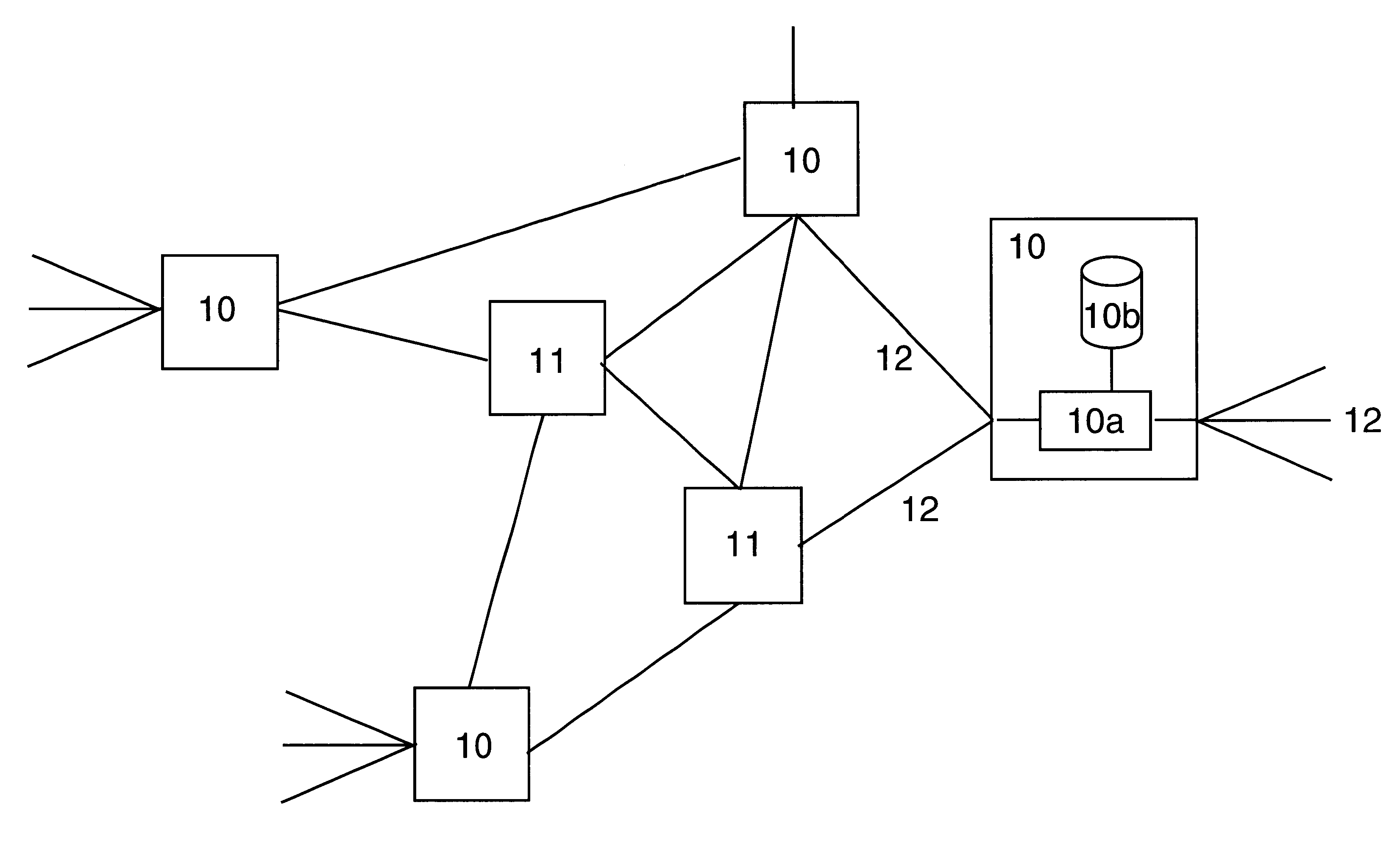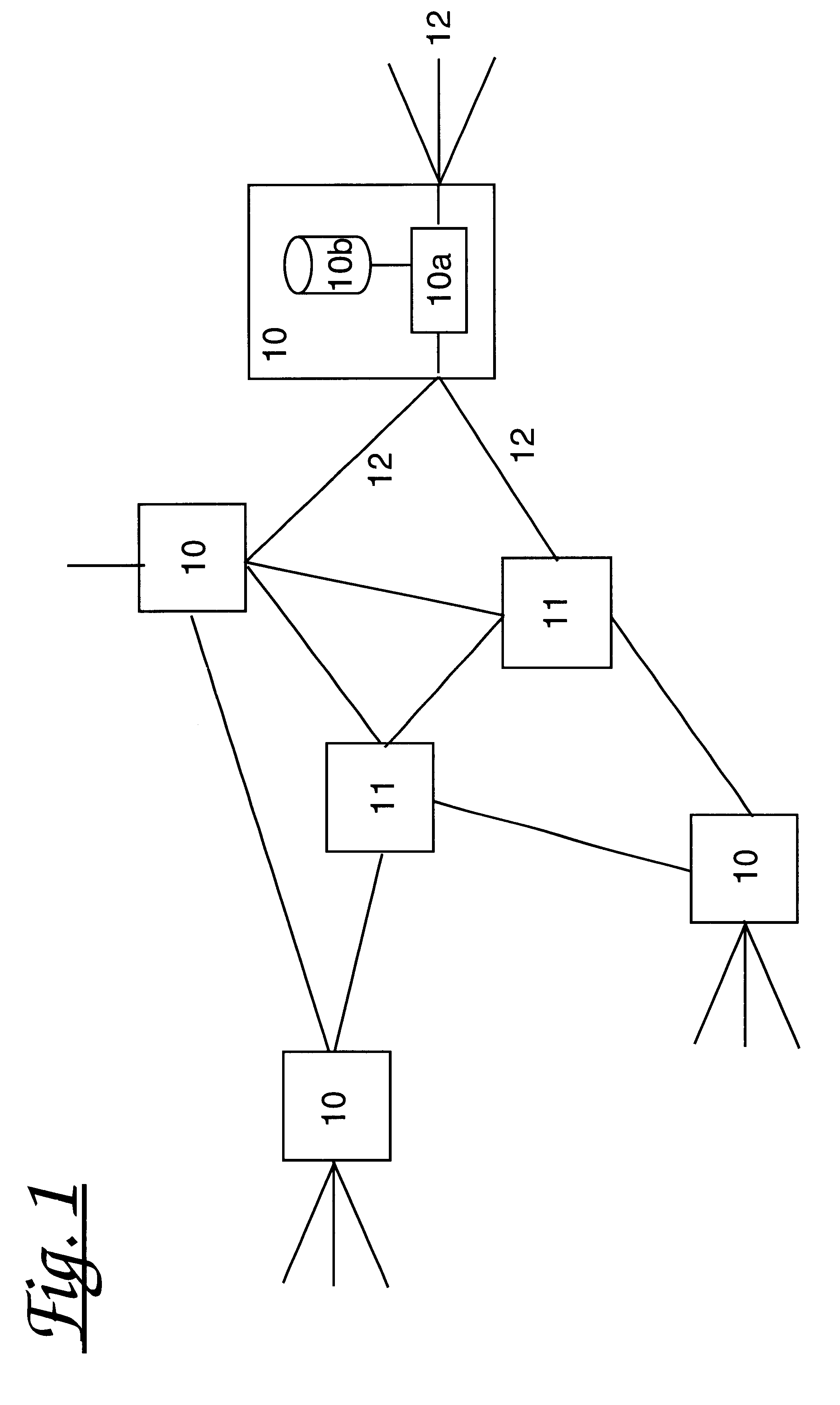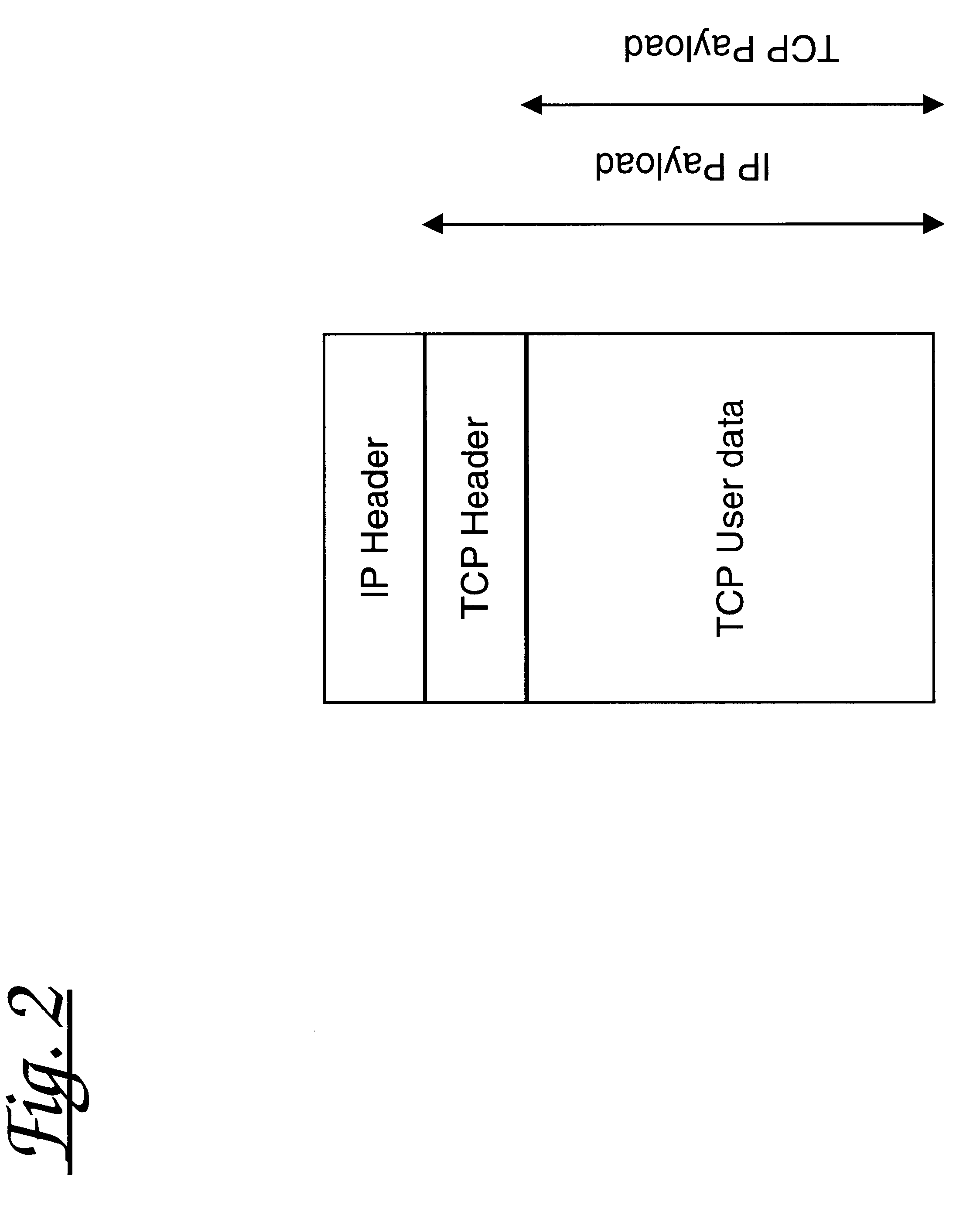Internet differentiated services service for transaction applications
a technology of transaction applications and services, applied in data switching networks, frequency-division multiplexes, instruments, etc., can solve the problems of limiting the ability of existing ip networks to be able, limiting the ability of network operators to offer services, and not uniformly displaying the facilities
- Summary
- Abstract
- Description
- Claims
- Application Information
AI Technical Summary
Benefits of technology
Problems solved by technology
Method used
Image
Examples
first embodiment
In the present invention:
The initial packet of each request and response is marked as belonging to a specific class, A.
Those packets which are transmitted neither first nor last within a request or response are marked with a third class, B, which is distinct from A.
The final packet of each request and response is marked as belonging to an class, C, which is distinct from both A and B.
Where a request or response comprises a single packet, an additional mark is used to indicate membership of both forwarding classes A and C.
In addition, and for each class of traffic, the router can be provided with statistical distribution information characterising the nature of transactions of that class.
Referring now to FIG. 1, there is shown a network of routers 10-11 of which some 10 support network access functionality whilst other 11 may not. Each router comprises a processor 10a connected to input streams on its connections 12 and may comprise a storage medium 10b. As each packet passes through...
PUM
 Login to View More
Login to View More Abstract
Description
Claims
Application Information
 Login to View More
Login to View More - R&D
- Intellectual Property
- Life Sciences
- Materials
- Tech Scout
- Unparalleled Data Quality
- Higher Quality Content
- 60% Fewer Hallucinations
Browse by: Latest US Patents, China's latest patents, Technical Efficacy Thesaurus, Application Domain, Technology Topic, Popular Technical Reports.
© 2025 PatSnap. All rights reserved.Legal|Privacy policy|Modern Slavery Act Transparency Statement|Sitemap|About US| Contact US: help@patsnap.com



